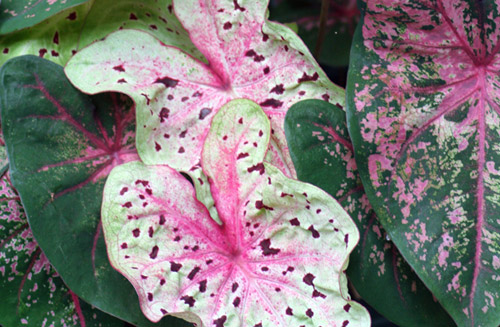
Welcome to another Monday morning and another lesson on a plant your horse can’t eat. Today, a closer look at a plant with such colorful leaves it doesn’t even need flowers, Caladium
A Little About Caladium
Caladium is a tuberous perennial herb with long, arrow shaped leaves which are often variegated & brightly colored. Flowers grow in a spadix and are surrounded by a spathe.
How Dangerous Is It?
This is a plant generally used for decorative planting and one that horses will rarely come into contact with. It’s also unpalatable to equines – however, it is dangerous if they get near it, so it’s best to be aware. Caladium sap contains calcium oxalate crystals which can irritate anything it comes into contact with.
All parts of the Caladium plant (especially the leaves) are toxic to equines.

What To Look For
You know your animal the best, so you should know when something is amiss. Caladium toxicity symptoms can include irritation of the lips, mouth & tongue, gastrointestinal problems & diarrhea. Contact with the sap may cause irritation on the skin as well.
Learn More
Be sure to check out the Caladium page to learn more about the plant and while you are at it why not check out more toxic plants?
*It should be noted that I’m not a veterinarian. This information is written specifically for horses and should be used for reference purposes only. If you think your horse has eaten something toxic call your vet right away.
